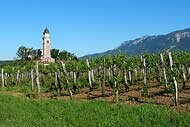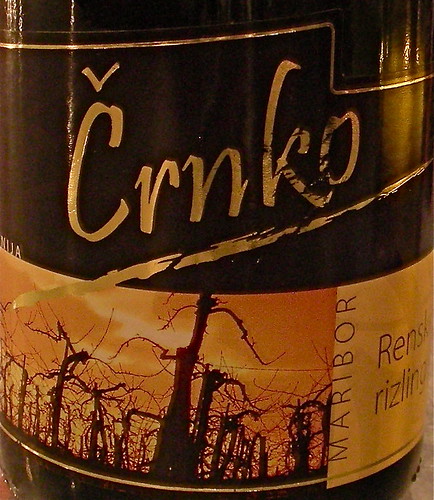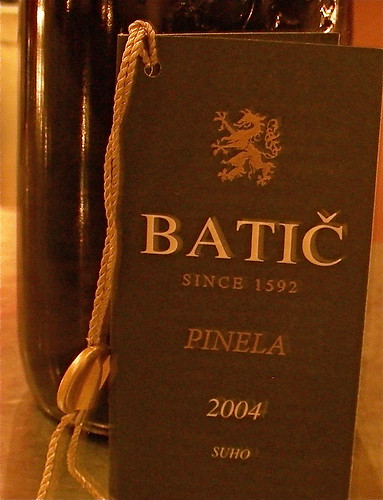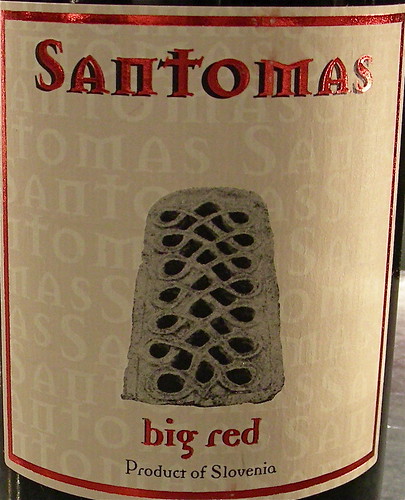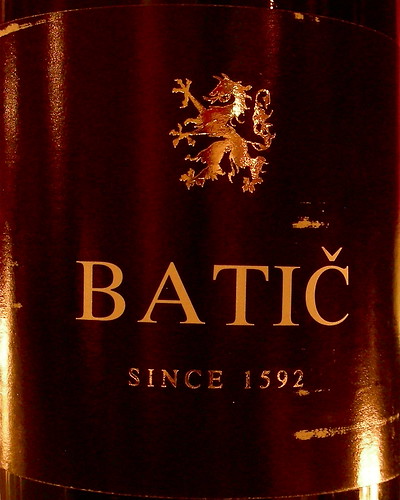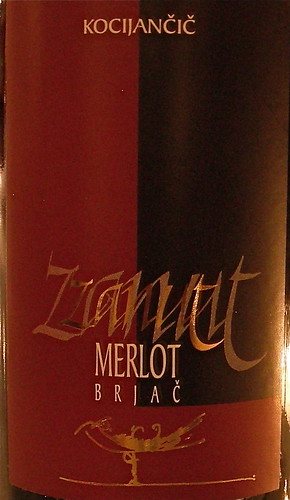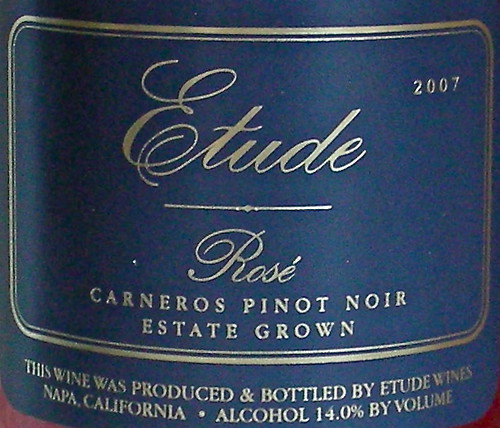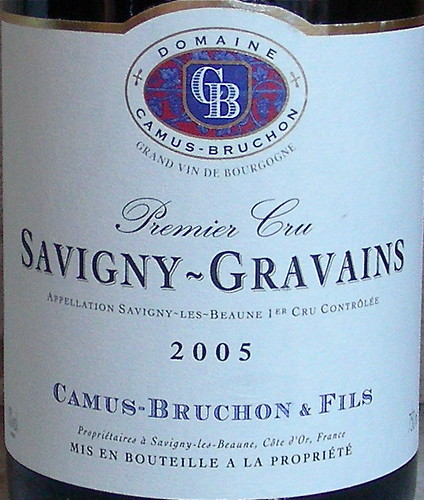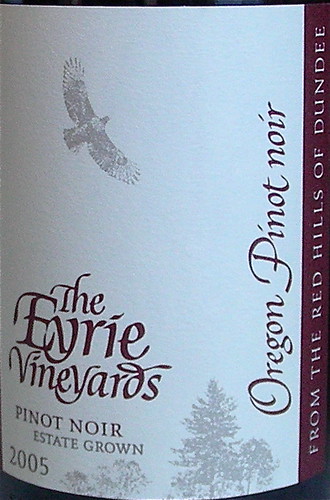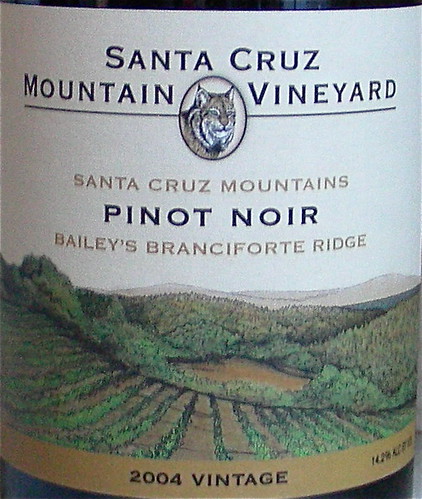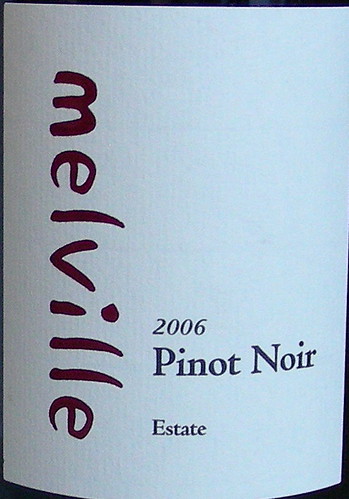Here is the original 2005 post and updates from our recent tasting.
The 1999 vintage
In California, the 1999 vintage is considered to be one of the best vintages of the 1990s. It is characterized by a small crop and a cool, steady growing season that climaxed with a warm fall.
In Bordeaux, 1999 was one of the most difficult vintage in recent years. The weather pattern was unusual, with heavy outbreaks of rain from April onwards and above average temperature. Intermittent storms hit the region in the early half of August, although the weather was hot and dry in the latter half of the month. The end of September was marked by severe hailstorms and 100mm of rain fell on a wet September 20th.
The tasting
We tasted the following wines:
 1999 S. Anderson Cabernet Sauvignon Richard Chambers Vineyard Stags Leap District: S. Anderson, recently renamed Cliff Lede Vineyards, started bottling its limited production Richard Chambers Vineyard Cabernet Sauvignon in 1989. The Richard Chambers Vineyard is a highly-acclaimed 18 acres vineyard planted to red Bordeaux varieties in the Stags Leap District. It was finally bought by the winery in 2003. The wine exhibited a complex nose with spiced leather and berry aromas. On the palate, the tasters found it young, lively, and sweet. Overall, they appreciated the wine's elegance and balance and placed it in first place. UPDATE: aromas of tobacco, vanilla, pepper, rich and spicy, still very young. Moved to 2nd place.
1999 S. Anderson Cabernet Sauvignon Richard Chambers Vineyard Stags Leap District: S. Anderson, recently renamed Cliff Lede Vineyards, started bottling its limited production Richard Chambers Vineyard Cabernet Sauvignon in 1989. The Richard Chambers Vineyard is a highly-acclaimed 18 acres vineyard planted to red Bordeaux varieties in the Stags Leap District. It was finally bought by the winery in 2003. The wine exhibited a complex nose with spiced leather and berry aromas. On the palate, the tasters found it young, lively, and sweet. Overall, they appreciated the wine's elegance and balance and placed it in first place. UPDATE: aromas of tobacco, vanilla, pepper, rich and spicy, still very young. Moved to 2nd place. 1999 Viansa Cabernet Sauvignon Reserve Sonoma County: Viansa is known as a premier producer of Italian varietals, as well as classic California grapes like Cabernet Sauvignon and Chardonnay. The wine had an intense fruity nose with some peppery notes, and a sharp, raisiny taste on the palate. Overall, the group felt overwhelmed by the wine and placed it in fourth position. UPDATE: aromas of blackberry, raspberry, well balanced, good finish, better with food. Moved to 3rd place.
1999 Viansa Cabernet Sauvignon Reserve Sonoma County: Viansa is known as a premier producer of Italian varietals, as well as classic California grapes like Cabernet Sauvignon and Chardonnay. The wine had an intense fruity nose with some peppery notes, and a sharp, raisiny taste on the palate. Overall, the group felt overwhelmed by the wine and placed it in fourth position. UPDATE: aromas of blackberry, raspberry, well balanced, good finish, better with food. Moved to 3rd place. 1999 Melka CJ Cabernet Sauvignon Napa Valley: Philippe and Cherie Melka are the co-owners of Melka Wine. Philippe Melka was born and trained in Bordeaux and is now a winemaking consultant to several premium wineries in Napa Valley, while Cherie Melka is a trained enologist. The winery has only two labels: the Métisse Proprietary Red, a Bordeaux blend, and the CJ Cabernet Sauvignon, a 100% Cabernet Sauvignon - named for Cherie and Philippe's children, Chloé and Jeremy, who are also the creators of the wine's label. The wine had a complex woody nose with notes of blackberry. On the palate, it was tannic, peppery, a bit green and young. Overall, the group liked the wine and placed it in second place. UPDATE: aromas of sweet red fruits, tart, somewhat flat on the palate, short finish. Moved to fifth place.
1999 Melka CJ Cabernet Sauvignon Napa Valley: Philippe and Cherie Melka are the co-owners of Melka Wine. Philippe Melka was born and trained in Bordeaux and is now a winemaking consultant to several premium wineries in Napa Valley, while Cherie Melka is a trained enologist. The winery has only two labels: the Métisse Proprietary Red, a Bordeaux blend, and the CJ Cabernet Sauvignon, a 100% Cabernet Sauvignon - named for Cherie and Philippe's children, Chloé and Jeremy, who are also the creators of the wine's label. The wine had a complex woody nose with notes of blackberry. On the palate, it was tannic, peppery, a bit green and young. Overall, the group liked the wine and placed it in second place. UPDATE: aromas of sweet red fruits, tart, somewhat flat on the palate, short finish. Moved to fifth place. 1999 Groth Cabernet Sauvignon Oakville: Groth Winery is renowned for its estate-grown Oakville Cabernets. The wine had the darkest color. The nose was intense with almond paste and woody aromas. On the palate, it was young, tannic and fruity. Overall, the group found the wine too tannic and oaky and placed it in sixth position. UPDATE:: subtle nose, nutty, aromas of licorice, full-bodied and smooth on the palate, long tasty finish. Moved to 1st position.
1999 Groth Cabernet Sauvignon Oakville: Groth Winery is renowned for its estate-grown Oakville Cabernets. The wine had the darkest color. The nose was intense with almond paste and woody aromas. On the palate, it was young, tannic and fruity. Overall, the group found the wine too tannic and oaky and placed it in sixth position. UPDATE:: subtle nose, nutty, aromas of licorice, full-bodied and smooth on the palate, long tasty finish. Moved to 1st position. 1999 Freemark Abbey Cabernet Sauvignon Bosché: The Freemark Abbey Winery has produced Cabernet Bosché from the 21.4 acres Bosché estate vineyard since 1970. The vineyard is located 1/4 mile north of the town of Rutherford and is well-known for producing wines of distinctive character and excellent quality. The wine had a fragrant fruity nose. On the palate, it was smooth, sweet and fruity, almost candy-like. Overall, it was pleasant with a good balance, and was placed in third place. UPDATE: aromas of anise, berry and cherry, earthy, mid palate a bit thin, short finish. Moved to 4th place.
1999 Freemark Abbey Cabernet Sauvignon Bosché: The Freemark Abbey Winery has produced Cabernet Bosché from the 21.4 acres Bosché estate vineyard since 1970. The vineyard is located 1/4 mile north of the town of Rutherford and is well-known for producing wines of distinctive character and excellent quality. The wine had a fragrant fruity nose. On the palate, it was smooth, sweet and fruity, almost candy-like. Overall, it was pleasant with a good balance, and was placed in third place. UPDATE: aromas of anise, berry and cherry, earthy, mid palate a bit thin, short finish. Moved to 4th place. 1999 Château Branaire Ducru: Château Branaire Ducru is a classified Fourth Growth from the commune of Saint Julien. The Château owns 50 hectares of vines planted with 70% Cabernet Sauvignon, 22% Merlot, 5% Cabernet Franc and 3% Petit Verdot and an average vine age of 35 years. The wine had a subdued nose of blackberry and pepper with hints of venaison aromas. On the palate, it was less sweet than the other wines, with a strong tannic structure and a solid finish. Some tasters liked it a lot while some others found that it did not have enough fruit. It was placed in fourth position. UPDATE: unfortunately, the bottle was corked and I didn't know about the plastic wrap trick at the time.
1999 Château Branaire Ducru: Château Branaire Ducru is a classified Fourth Growth from the commune of Saint Julien. The Château owns 50 hectares of vines planted with 70% Cabernet Sauvignon, 22% Merlot, 5% Cabernet Franc and 3% Petit Verdot and an average vine age of 35 years. The wine had a subdued nose of blackberry and pepper with hints of venaison aromas. On the palate, it was less sweet than the other wines, with a strong tannic structure and a solid finish. Some tasters liked it a lot while some others found that it did not have enough fruit. It was placed in fourth position. UPDATE: unfortunately, the bottle was corked and I didn't know about the plastic wrap trick at the time.Now, we had the fun idea to bring two bottles of these wines so that we can redo the same tasting in a couple of years or so. Imagine how interesting it will be to compare our tasting notes from the two meetings and find out how each wine has evolved! UPDATE: in three years, these 10 year old wines had evolved very differently but some of them didn't seem to have reached their peak yet.
Technorati tags:: wine food & drinkTechnorati tags: wine food & drink
